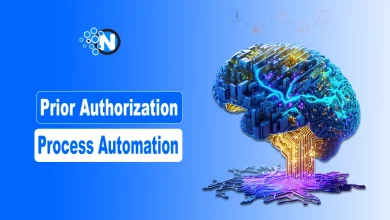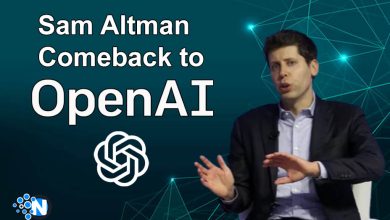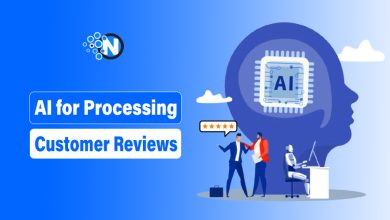Augmenting Training Data Sets with Generative AI

Customized generative AI solutions have great potential for several industries, providing companies with an exceptional chance to transform their processes with amazing speed and creativity. Companies can find lots of opportunities to optimize workflows, increase efficiency, and make more informed decisions by utilizing generative AI, all while promoting a creative and innovative culture.
Moreover, generative AI’s capacity to improve machine learning model training datasets is among its most fascinating features. Generative artificial intelligence (AI) contributes to the strength and accuracy of these models by offering a wide variety of data. This implies that companies can depend on their machine learning systems to provide more accurate insights and forecasts, enabling them to handle challenging situations confidently and clearly.
Below we will explain how generative AI can augment training data sets to help companies achieve their goals efficiently.
Challenges in Collecting Data
Finding high-quality training data is one of the main problems with machine learning programs. The creation and application of reliable models are frequently hampered by problems with data scarcity and quality. Insufficient or skewed data gathered from real-world events could result in less than ideal performance.
Role of Generative AI
Using algorithms that can create new data samples that mimic the properties of the original dataset is the core of generative artificial intelligence. To create fake data points, these algorithms employ methods like variational autoencoders (VAEs) and generative adversarial networks (GANs). Generative AI provides an answer to the problems associated with poor and scarce data when it comes to training data augmentation.
Major Benefits of Generative AI Implementation
Using generative models, like Generative Adversarial Networks (GANs), to improve training datasets is standard procedure in machine learning. When the provided dataset lacks diversity or has limitations, this strategy is particularly beneficial.
A Greater Diversity of Data
By producing fresh examples that aren’t in the original dataset, generative AI systems help to diversity training datasets. This augmentation reduces overfitting and strengthens the machine learning models’ capacity to generalize to new situations, which improves the models’ overall performance. Businesses may create models that are more resilient and adaptive by including generative AI into the training data.
Improved Data Annotation
Data annotation is a laborious and resource-intensive endeavor in machine learning. Generative AI systems streamline the annotation process, automating it and thereby reducing the time and resources required for data preparation. This acceleration in the model training process enables businesses to deploy machine learning models more swiftly.

Reduced Data Collection Costs
The acquisition and preparation of extensive training data can incur substantial costs. By leveraging generative AI to augment training datasets, businesses can curtail the time and resources expended on data collection and preparation. This cost reduction makes building and maintaining machine learning models more feasible for businesses across all scales.
Generative AI for Data Sets
Generative AI proves to be a potent tool for augmenting training datasets and enhancing the performance of machine learning models. By diversifying and improving the quality of training data, businesses can construct more precise and dependable models adept at addressing real-world challenges. The process of augmenting datasets using generative AI typically involves the following steps:
Data Augmentation with GANs
- GAN Training: Train a GAN on the existing dataset. GANs consist of a generator and a discriminator. The generator creates new data samples, and the discriminator evaluates whether the samples are real or generated.
- Data Generation: Use the trained generator to create additional synthetic samples. These samples should resemble the characteristics of the original dataset.
Best Practices
- Validation Set: Ensure that the augmented data is not used in the validation set to maintain an unbiased evaluation of the model.
- Balance: Maintain class balance in classification tasks to prevent overemphasis on a particular class.
- Domain Understanding: Understand the domain and characteristics of the data to generate realistic synthetic samples.
Implementation
- Generative Model Integration: Integrate the generative model into your data pipeline to seamlessly generate augmented data during training.
- Code Libraries: Use popular machine learning libraries such as TensorFlow or PyTorch that offer pre-built functions for GANs and data augmentation.
Evaluation
- Impact Analysis: Assess the impact of data augmentation on model performance by comparing results with and without augmentation.
- Monitoring: Monitor the model’s behavior during training to identify any adverse effects caused by augmented data.
Iterative Refinement
Feedback Loop: Continuously refine the generative model and data augmentation strategies based on model performance and domain expertise.
Considerations for Using Generative AI
Even though generative AI has the potential for training data augmentation, there are several practical and ethical issues to take into account. The creation of synthetic data gives rise to worries of bias, justice, and privacy. To make sure that the generated data truly reflects the underlying distribution and do not add unintentional biases into the model, rigorous validation and testing techniques are required.
Future Trends
It is anticipated that future developments in generative AI methods will spur more creativity in data augmentation. Better algorithms that can generate more varied and realistic data samples will make it easier to create machine learning models that are more reliable and accurate. Furthermore, when generative AI is extensively used, it is anticipated to transform many industries, including cybersecurity, banking, and healthcare.
Final Words
Adding generative AI to training data sets provides a strong way to address the problems with data collecting and quality. Generative AI increases dataset diversity, minimizes manual labeling work, and boosts model performance by creating synthetic data samples that closely resemble the original dataset. To ensure the responsible use of generative AI in data augmentation, however, rigorous examination of ethical and practical issues is necessary.




